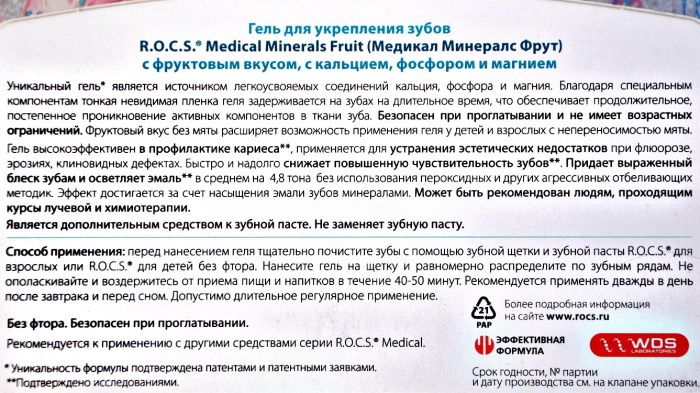Content
- The reasons for the development of coccygodynia in women
- Risk factors
- Classification and stages of development
- Symptoms of pathology
- Pain syndrome
- Change in gait
- Irritable bowel syndrome
- Localization of discomfort
- Diagnostics
- Laboratory research
- Hardware diagnostics
- Treatment of the disease
- Medicines
- Manual therapy
- Physiotherapy
- Exercise therapy
- Folk methods
- Surgical intervention
- Coccygectomy
- Radiofrequency ablation (RFA) for coccygodynia
- Prognosis and complications
- Video about coccygodynia
Coccygodynia is a disease associated with pain in the lowest part of the spine - the coccyx. It is a rudiment, a residual, underdeveloped part of the skeleton of the spinal column that does not function.
However, in some cases, when inflammatory processes occur in the bone and adjacent articular tissue, this part of the spine can cause severe discomfort. Most often, the problem occurs in women who have a history of at least one natural, most often complicated birth. The symptoms, diagnosis and treatment of coccygodynia will be discussed later in the article.
The reasons for the development of coccygodynia in women
Anakopchikovy pain syndrome or coccygodynia is a disease characterized by soreness of the coccyx, which can radiate into the anus, perineum, sacrum, buttocks. Quite often it happens that such spasms bother a person throughout his life, then disappearing, then reappearing.
The coccyx itself is the lower, terminal section of the spine and has 4-5 vertebrae, which are connected to the sacrum using a cartilaginous disc. In this compound, there is no special jelly-like liquid that would provide mobility of the skeleton. Normally, there is no movement in the joint and the coccyx itself is static, and the appearance of pain and inflammation is associated with infringement of the nerve endings, which are located in the sacral and coccygeal zone.
The exact nature of the occurrence of pain in the coccyx has not yet been established for certain.
The reasons for the manifestation of such spasms in the lower rudimentary spine can be:
- the birth of a sufficiently large child;
- the development of oncological processes in this area (chondroma, presacral cyst), metastases;
- existing congenital defects and anomalies in the development of the pelvic organs (dysplasia of the hip joints);
- trauma to this area;
- deterioration of blood flow in the area of the sacrococcygeal joint (ischemia);
- development of osteochondrosis, arthritis, salt deposition at the junction of the tailbone and sacrum;
- the presence of inflammatory processes in the pelvic organs (prostatitis, proctitis, urethritis, inflammation of the fallopian tubes and appendages in women - salpingo-ophritis);
- operations performed on the pelvic and perineal organs;
- fracture of the pelvic bones;
- passive lifestyle;
- strong psycho-emotional stress and stress (in this case, we are talking about idiopathic coccygodynia).
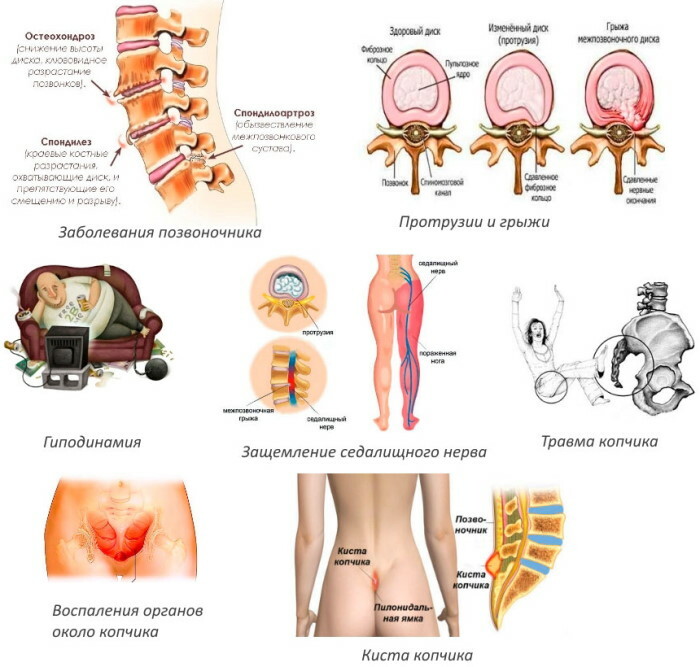
As mentioned above, the fair sex is more likely to suffer from pain in the tailbone, which is directly related to the peculiarities of their physiology. They have a wider pelvis and this area (tailbone and sacrum) is subjected to tremendous stress during the period of bearing a child. Also, in women, the tailbone deviates more posteriorly, while in men it is, as it were, bent forward (inward) and, due to this, is hidden in the intergluteal space.
Risk factors
Coccygodynia (symptoms and treatment in women are individual) most often develops in people who have had tailbone injury, while often the symptoms of the disease do not appear immediately, but after a rather long time.
Also, factors that increase the risk of developing the disease include:
- chronic constipation;
- osteochondrosis (lumbar, coccygeal and sacral);
- fracture of the pelvic bones;
- long stay in a sitting position;
- inflammatory bowel disease;
- myositis and neuritis of the pelvic and perineal organs;
- poor psycho-emotional state, constant nervous overstrain.
Classification and stages of development
Coccygodynia, the symptoms and treatment in women of which will be discussed in more detail later in the article, as a disease not has some kind of unified standardized and generally recognized classification, therefore its division into types is very conditionally.
So the Soviet surgeon and scientist A.M. Aminaev proposes to distinguish the types of coccygodynia, depending on the causes of its occurrence:
| Secondary | It develops due to inflammation in the pelvic organs. |
| Spinal | It manifests itself with lesions of the spinal cord. |
| Post-traumatic | It occurs as a result of trauma to the tailbone due to falls, fractures. |
| Idiopathic | It occurs due to psychosomatic disorders in the body. |
 Later, a slightly different, but very similar classification, which later became more popular, was proposed by Yu.A. Perov.
Later, a slightly different, but very similar classification, which later became more popular, was proposed by Yu.A. Perov.
He identified the following types of coccygodynia:
- traumatic - arising from mechanical stress;
- idiopathic - also associated its occurrence with a psychosomatic disorder of the body;
- inflammatory-toxic - when pain in the tailbone appeared as a result of inflammation of the pelvic organs;
- neurodystrophic - develops due to damage to the spinal cord.
In fact, there are no fundamental differences in the described classifications, and today doctors use them at their own discretion.
Stages of development of coccygodynia:
- subacute - at this stage, the symptoms are poorly expressed and can go away on their own if the pain is not associated with mechanical injuries and internal changes in the composition of the cerebrospinal fluid;
- spicy - when the pain is severe and the patient needs pain medications;
- chronic - when the problem has been present for a long time and periodically the soreness intensifies and weakens.
Symptoms of pathology
At first glance, it seems obvious that the main symptom of coccygodynia is pain in the coccyx, but in addition signs may also change gait, bowel problems may appear, and pain may also appear in other parts body.
Pain syndrome
The main manifestation of coccygodynia is pain localized in the coccyx area. Painful sensations can develop at any time, but still most often bother sufferers of coccygodynia at night. In terms of duration, painful attacks can be different - from long-term to short, fast-passing ones.
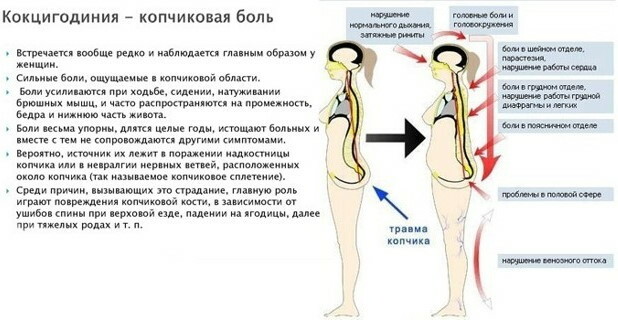
Pain in nature can also be:
- shooting;
- cutting;
- sharp;
- pulling;
- aching.
Change in gait
Because of pain, people suffering from coccygodynia cannot normally sit, lie on their backs, walk, which of course affects their gait. It becomes slow, waddling, as fast movements cause pain.
Irritable bowel syndrome
Due to the frequent pain in the tailbone area, there is pressure on the intestines, which causes its upset, spasms. The condition may improve briefly after the act of defecation, however, without treatment of the pathology, a syndrome may develop irritable bowel, which is characterized by the presence of a violation of intestinal function, without visible damage to structural tissues organ.
Localization of discomfort
In addition to the fact that pain can be felt in the sacrococcygeal joint, it can also be given to the perineum, genitals, buttocks, and back. The severity of the spasms can vary depending on the position of the person's body, what he is doing. The pain is more pronounced when a person is forced to sit; when walking, it decreases. Severe cramps sometimes occur when lying down, especially at night. The pain can also worsen with coughing, sneezing, and forceful exertion.
Diagnostics
Coccygodynia, the symptoms and treatment in women of which are considered in the article, how is the diagnosis made when carried out all the necessary diagnostic manipulations, the patient's anamnesis was studied and the nature of the origin of pain was clarified and spasms.
At the initial appointment, the doctor, in conversation with the patient, tries to find out the following information:
- whether the person had an injury in the coccyx area:
- in women - how the delivery took place, how large the fetus was (if there was a birth);
- have any operations been performed on the pelvic organs;
- whether the person suffers from chronic inflammatory diseases of the pelvic organs;
- how can you characterize the pain experienced.
Thanks to this information, the specialist can determine the nature of the onset of pain and choose further tactics for examining the patient. To obtain the completeness of the entire clinical picture, laboratory and hardware diagnostics are used.
Laboratory research
Laboratory tests include the analysis of various kinds of biomaterials of patients (feces, urine, blood).
If you suspect coccygodynia, they usually carry out:
- general blood analysis;
- blood chemistry;
- Analysis of urine;
- stool analysis (if the patient complains of problems with stool).
These studies reveal anemia, inflammation, and an increased level of leukocytes. A similar examination is carried out with a number of other diseases, therefore, the most complete picture of the presence of pathology is still provided by hardware diagnostics.
Hardware diagnostics
To confirm or refute the diagnosis of coccygodynia, they can carry out:
-
colonoscopy - helps to study the intestinal mucosa and exclude its damage as the primary source of the origin of pain;
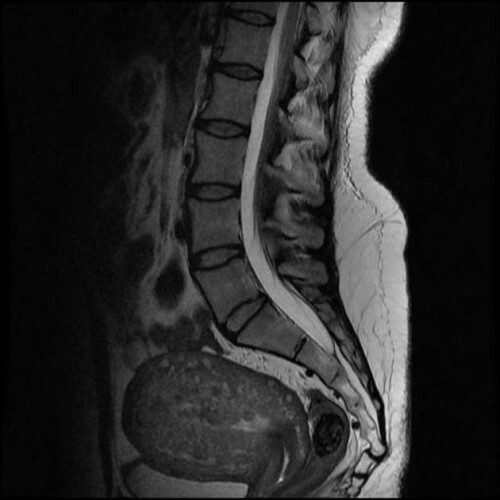
- Abdominal ultrasound - also allows you to understand if the pain is caused by any internal trauma or inflammation;
- sigmoidoscopy - is carried out on an empty stomach and the intestines previously cleaned with an enema. Allows to exclude the presence of tumors;
- computed tomography and x-ray of the spine - allow you to get the most complete picture of the patient's clinical condition.
Also, if you suspect coccygodynia, a rectal digital examination is required, which allows to assess the condition of the pelvic muscles, the presence of hypertonicity in them, to detect the compaction of the sacrococcygeal ligaments.
Treatment of the disease
Koktsigodonia, symptoms and treatment in women, as well as in men, in most cases are associated with injuries and elimination of their consequences, amenable to adjustment with the help of medications, physiotherapy and surgical manipulation.
The specific tactics are chosen depending on a number of factors:
- the age of the patient;
- the presence of concomitant diseases;
- the stage of development of the disease, the duration of its course;
- the effectiveness of previously used treatment;
- pathogenesis (origin) of the disease.
Medicines
The main group of drugs used to treat coccygodynia (more precisely, to relieve symptoms, associated with this disease) are non-steroidal (non-hormonal) anti-inflammatory drugs (NSAIDs). They do not contain hormones, which avoids the appearance of side effects, but at the same time they are very effective and effective.
These include:
- Lidocaine - the maximum dosage for adults should not exceed 300 mg;

Lidocaine 10% in ampoules 100mg / ml - Novocain - appoint about 70-120 ml intramuscularly once a day;
- Ibuprofen - the maximum daily dose is 1200 mg (you should not take more than 6 tablets in 24 hours), the interval between taking the drug should be at least 4 hours;
- Movalis - 7.5-15 mg per day;
In addition to anesthetics and pain relievers, muscle relaxants are used to treat the condition (drugs that lower the tone skeletal muscle), which help relieve muscle tension, and antidepressants, which help enhance the effects of pain relievers drugs.
With the low effectiveness of the applied pain medications, in addition to NSAIDs, hormonal drugs, for example, Diprospan, which allows in 85% of cases to stop pain and alleviate the condition the patient.
Manual therapy
It is an alternative method for treating diseases of the musculoskeletal system. Many researchers are skeptical about manual therapy, believing that patients achieve positive dynamics due to the placebo effect. Nevertheless, many people use the services of chiropractors, including for pain in the tailbone. Such specialists carry out a relaxation massage session with the help of hands, taking into account the peculiarities of a particular disease.
With coccygodynia, massage of external constricted (spasmodic) structures is effective, as well as the effect on them from the inside, through the rectum. This massage gives a good effect in combination with acupuncture (acupuncture).
Physiotherapy
In addition to drug treatment, patients suffering from pain in the coccyx can be prescribed various physiotherapeutic procedures:
- laser therapy - a laser beam of light penetrates through external tissues to a sufficiently large depth and affects directly the inflamed areas, contributing to their recovery and healing;
-
electrophoresis with novocaine - the affected area is affected by a small current strength and at the same time the medicine is injected into the body in parallel;

- rectal darsonvalization - the affected area is exposed to alternating current.
If the treatment is carried out in a comprehensive manner and the patient observes all the doctor's recommendations, then physiotherapy helps to speed up the processes of relaxation and recovery of the pelvic floor muscles.
Exercise therapy
Exercise can have a good effect on coccygodynia, however, in order for it to be beneficial, not harmful, some points should be considered:
- you should choose those exercises during which the hip joints will be involved;
- in case of acute pain, any physical activity is strictly prohibited;
- pain should not appear during classes;
- all selected exercises should be static in nature (as a rule, they are performed in fact in the starting position with minimal effort).
The best 3 exercises to help relax the coccygeal-sacral region are:
- ball exercises - during the task, it is squeezed between the thighs. The starting position can be either lying on your stomach, face down, or just standing. The ball is placed between the thighs and for 15 seconds. squeeze it with muscles, and then relax;
- a boat - lying on your stomach, raise your legs and arms outstretched for 15-20 seconds, and then relax. Repeat 10-15 times for 2-3 approaches;
- birch - A gymnastic mat or rug is required for this exercise. A cushion can be placed under the lumbar region. Supporting your back with your hands, try to stretch your straight legs up. If the exercise is difficult, then you can use the wall as a support.
Folk methods
Coccygodynia is a disease that requires an integrated approach. In addition to physiotherapy, exercise therapy and drug treatment, folk remedies can also help to alleviate the condition and relieve pain in the tailbone. True, in most cases they help both women and men only with the manifestation of the initial symptoms.
For pain relief, you can use:
- mini-compresses soaked in lavender, fir or grated fresh potatoes (raw);
- iodine grid-painting - such an image of iodine with the help of a cotton swab is applied at the bottom of the spine;
- relaxing baths or lotions with geranium decoction;
- sea buckthorn candles - will help if the pain is associated with inflammatory processes in the rectum - hemorrhoids, cracks, proctitis;
- tincture of potato sprouts - for this, a glass of potato sprouts no more than 2-3 cm high is poured with 500 ml of alcohol and allowed to brew for 10-14 days, after which it is rubbed into the sore spot 2-3 times a day;
- rosehip broth - a small amount of berries is poured with boiling water and allowed to brew for about an hour, after which the infusion is drunk in equal parts 3-4 times a day;
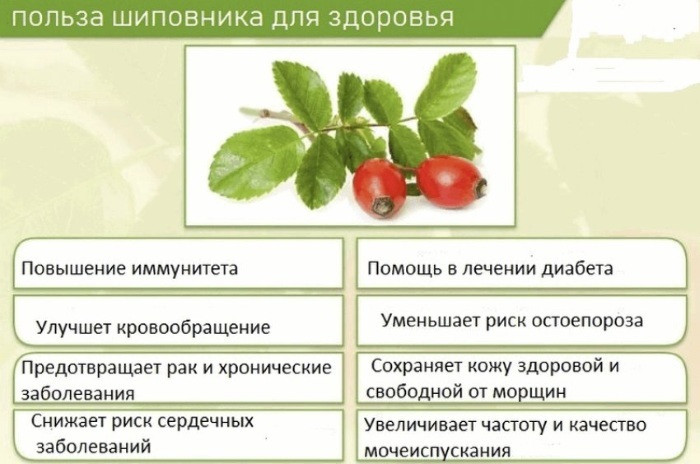
Rose hip. Healing properties - dressings soaked in aloe vera juice - for this squeeze the juice from several leaves of aloe and soak it one side of gauze or bandage, after which a bandage is applied in the coccyx zone to the sore spot and fixed her.
Surgical intervention
Surgical intervention is an extreme measure, which is used for coccygodynia if:
- the prescribed treatment was completely ineffective;
- there is pathological mobility of the coccyx (this condition is observed with dislocations and fractures of the coccyx);
- there are cystic formations on the tailbone.
There are 2 types of operations that are performed for coccygodynia:
- coccygectomy
- radiofrequency ablation.
Coccygectomy
Coccygectomy involves the complete removal of the final rudimentary spine - the coccyx. This is an open operation, during which there are high risks of damage to large blood vessels and nerve endings. In this regard, the likelihood of complications and the patient entering a long rehabilitation and recovery period after surgery is very high.
The most dangerous complication after coccygectomy is the violation of the integrity of the membranes of the rectum and trauma to the external sphincter. In addition, hematomas, seromas can occur in the area of manipulation, the damaged area can become infected, which leads to the development of an abscess. Today, they are trying to refuse from coccygectomy all over the world, preferring to minimize the risks, and prefer radiofrequency ablation.
Radiofrequency ablation (RFA) for coccygodynia
It is a minimally invasive (low-traumatic) method of surgical treatment of diseases of the spine, including coccygodynia. The essence of the method lies in the introduction of a guide needle into the patient's body into the problem area, the task which consists in eliminating the pathways of transmission of the pain impulse from the injury site to the central nervous system.
With the help of a needle and special devices connected to it, a special electric field is created under the influence of which the destruction of nerve endings provoking pain and spasms occurs. After completing all the manipulations, the patient can return to his normal life in 2-3 hours.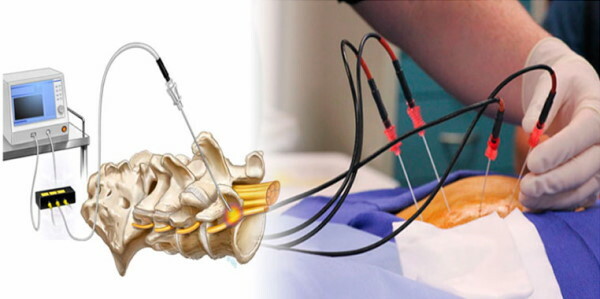
Contraindications to radiofrequency ablation are:
- gestational period;
- generalized infectious process;
- hemorrhagic diathesis (increased tendency to bleeding of blood vessels).
After the operation, patients should take care of themselves, do not lift weights and do not give on the coccygeal region other excessive load (do not squat, in general, exclude serious power loads on the body during exercise sports).
Prognosis and complications
Coccygodynia, whose symptoms and treatment in women and men are discussed in the article, can significantly worsen the quality of life. The outcome of the disease and the prognosis for its dynamics largely depends on how quickly after the manifestation of the first symptoms a person began to take action, went to the doctor and began to drink the prescribed drugs and follow the recommendations that contribute to improvement states.
If you ignore the problem and neglect treatment, the condition can worsen significantly, the following complications may develop:
- persistent constipation;
- the development of chronic diseases of the pelvic organs;
- significant decrease in performance;
- curvature of posture and displacement of the abdominal organs;
- problems with bearing pregnancy in women;
- impotence, painful erection in men;
- pain in the coccyx and in the pelvic organs with intimacy in many positions in both women and men.
Coccygodynia does not lead to complete disability and mortality and, as a rule, doctors can always help if patients themselves want it, do not ignore unpleasant symptoms and do not delay seeking medical attention help.
It is especially important to contact specialists in a timely manner after injuries, falls, when the blows fell on the coccyx area, pelvic organs. By quickly stopping the process of incipient inflammation, you can avoid the development of pathological changes in the sacrococcygeal zone and reduce the risk of pain in the future.
Coccygodynia is a chronic disease of the lower spine in which the main symptom is soreness in the coccyx. Coccygodynia causes serious discomfort and reduces the usual quality of life.
Most often, the disease develops in women, since they have this section of the spine, due to the peculiarities of the physiology and structure of the body, to a greater extent susceptible to excessive overload and trauma. The treatment of coccygodynia should be approached comprehensively, strictly following all the doctor's prescriptions, which will relieve the need for surgical intervention and in a short time will help to return to the usual way life.
Video about coccygodynia
Coccygodynia. Coccyx pain:

